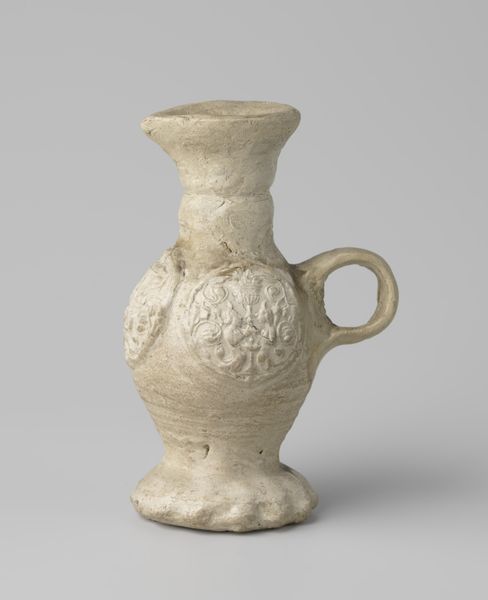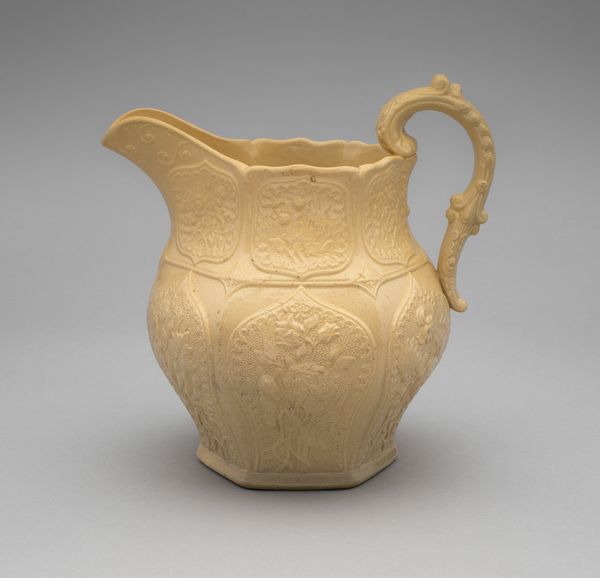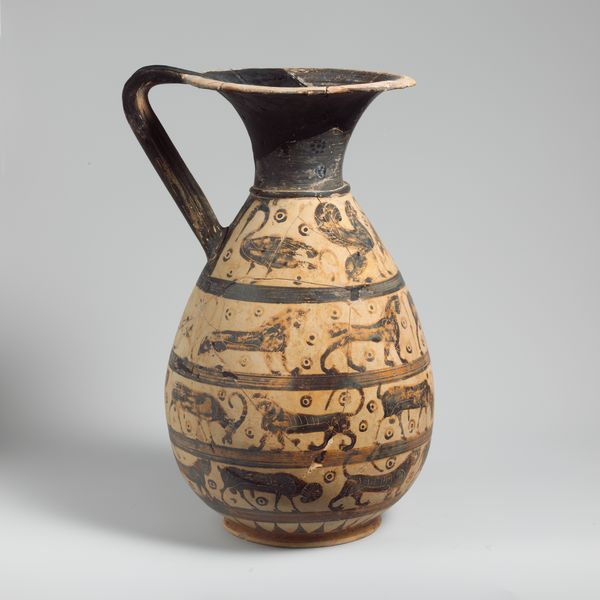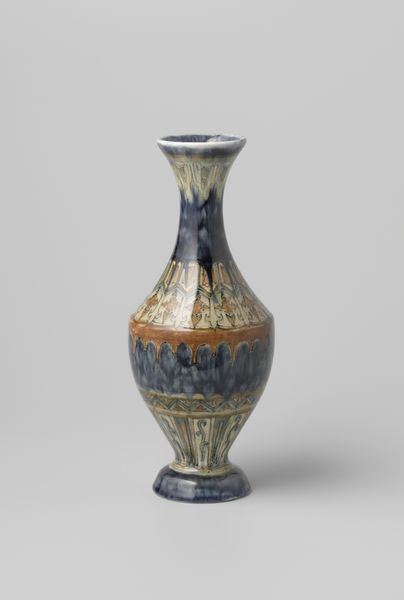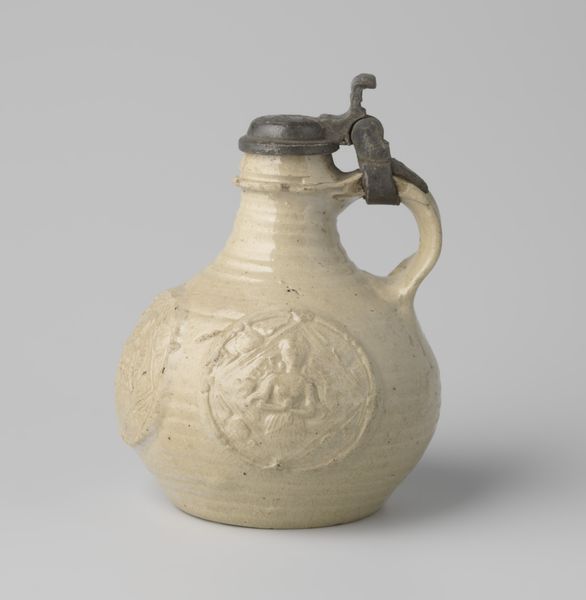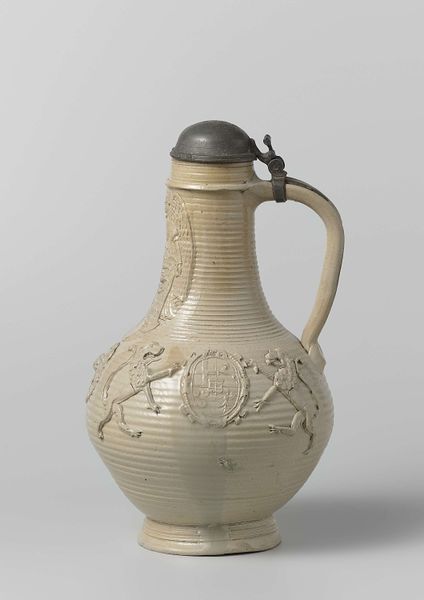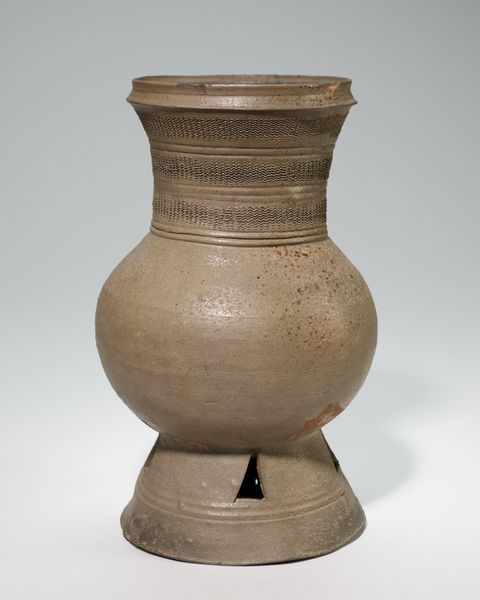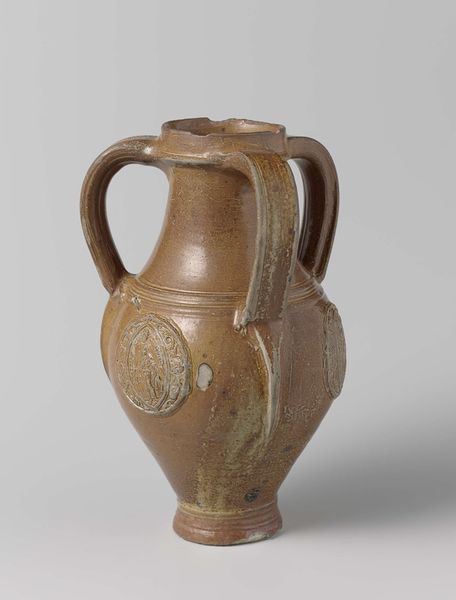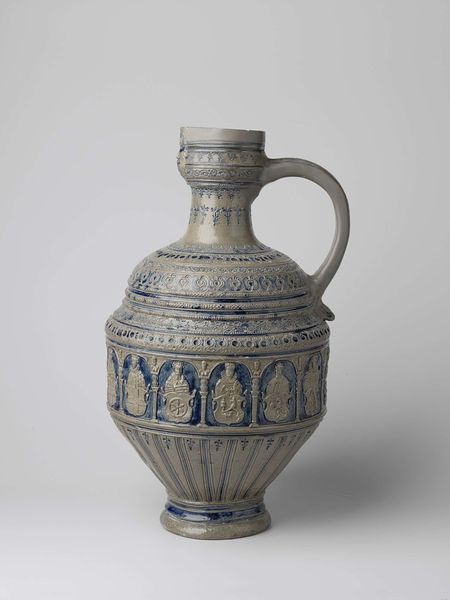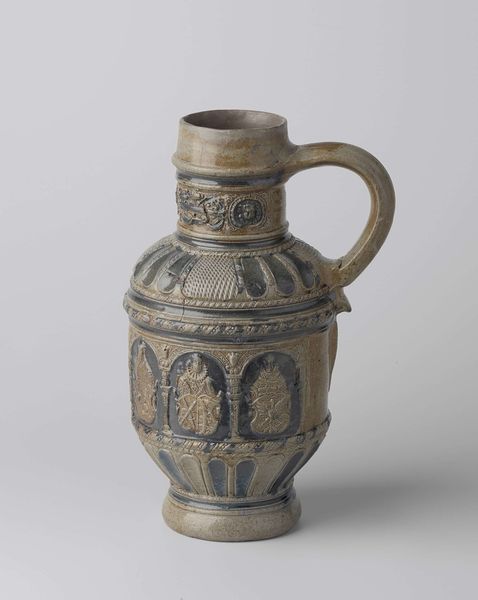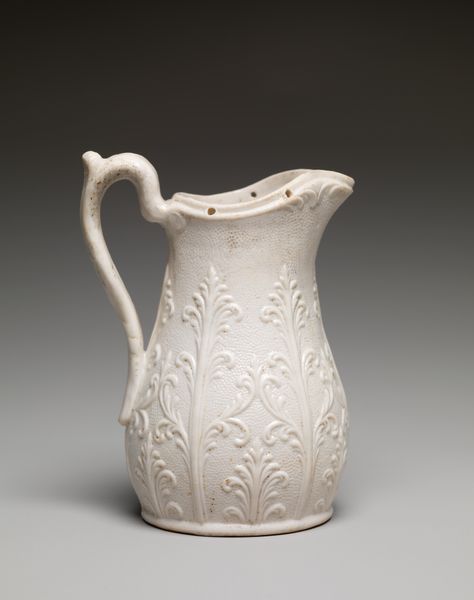
ceramic, earthenware
#
portrait
#
ceramic
#
11_renaissance
#
earthenware
#
stoneware
#
ceramic
Dimensions: height 16.5 cm, width 12 cm
Copyright: Rijks Museum: Open Domain
Curator: Here we have an example of 16th century stoneware. It is an earthenware pitcher dating to sometime between 1550 and 1599. The piece is referred to as a "Beacker," and it features portraiture set in medallions. Editor: My immediate impression is that of formal austerity. The color is muted, almost monastic, while the ribbed design lends an understated severity to the otherwise fluid form. Curator: Precisely. The formal austerity complements the medallion portraits. This echoes a classical sensibility, yet it is expressed through distinctly Renaissance materiality, highlighting the dynamic tension between form and cultural significance. Editor: The portraits, set within those circular medallions, seem almost totemic. These images aren't mere decorations, I think, but could function almost like family crests or guild symbols, announcing something vital about the owner or commissioner. Curator: Indeed, such ornamentation signifies elevated status and classical interest. The portraits’ symmetry, the curvature of the medallion, the pitcher’s overall geometry. Editor: Consider the weight a simple vessel can carry. People are constantly making things like pitchers, using them in common tasks, and yet somebody decided this should not just be an object for use, but also as a testament to their world. Curator: I agree wholeheartedly. Looking beyond mere functionality allows one to assess a deeper cultural consciousness embedded within its form. Editor: The material, that muted stoneware, paradoxically serves as both the stage and the player, blending seamlessly. So different from gaudy ceramic vessels that catch the eye and flaunt themselves with garish glazes and shocking displays of ostentatious detail. It stands, understated but strong. Curator: Exactly, it allows for the rigorous observation of structural harmony, showcasing material integrity and, on top of this, provides a lens into history through function and imagery. Editor: It's a stark reminder of how utilitarian objects may embody layers of narrative, memory, and personal meaning. Curator: A stunning demonstration that art is inseparable from our everyday human experience.
Comments
No comments
Be the first to comment and join the conversation on the ultimate creative platform.
